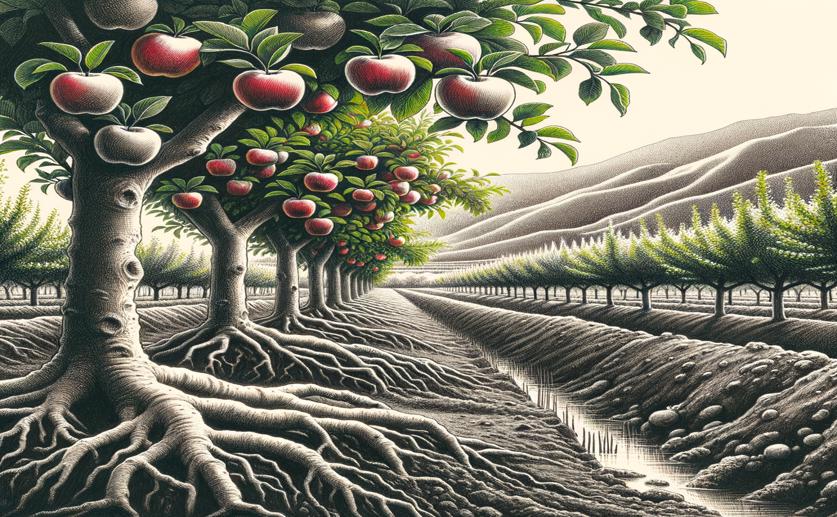
How Soil Moisture and Organic Carbon Affect Apple Orchards on the Loess Plateau
Jim Crocker
30th May, 2024

Image Source: Natural Science News, 2024
Key Findings
- The study on apple orchards in the Loess Plateau, China, found that soil moisture content (SMC) decreases significantly with orchard age, especially at depths of 100-500 cm
- Soil organic carbon (SOC) sequestration increases with orchard age, peaking at 12 years, and occurs significantly in deeper soil layers
- Soil moisture in deeper layers negatively correlates with SOC, and root dry weight density influences both SMC and SOC, highlighting the need for effective soil management practices
AgricultureEnvironmentPlant Science
References
Main Study
1) Soil moisture and soil organic carbon coupled effects in apple orchards on the Loess Plateau, China.
Published 29th May, 2024
https://doi.org/10.1038/s41598-024-63039-2
Related Studies
2) Deep soil water extraction by apple sequesters organic carbon via root biomass rather than altering soil organic carbon content.
3) Predominant role of soil moisture in regulating the response of ecosystem carbon fluxes to global change factors in a semi-arid grassland on the Loess Plateau.
4) Soil carbon sequestration impacts on global climate change and food security.
Journal: Science (New York, N.Y.), Issue: Vol 304, Issue 5677, Jun 2004



 23rd May, 2024 | Jenn Hoskins
23rd May, 2024 | Jenn Hoskins